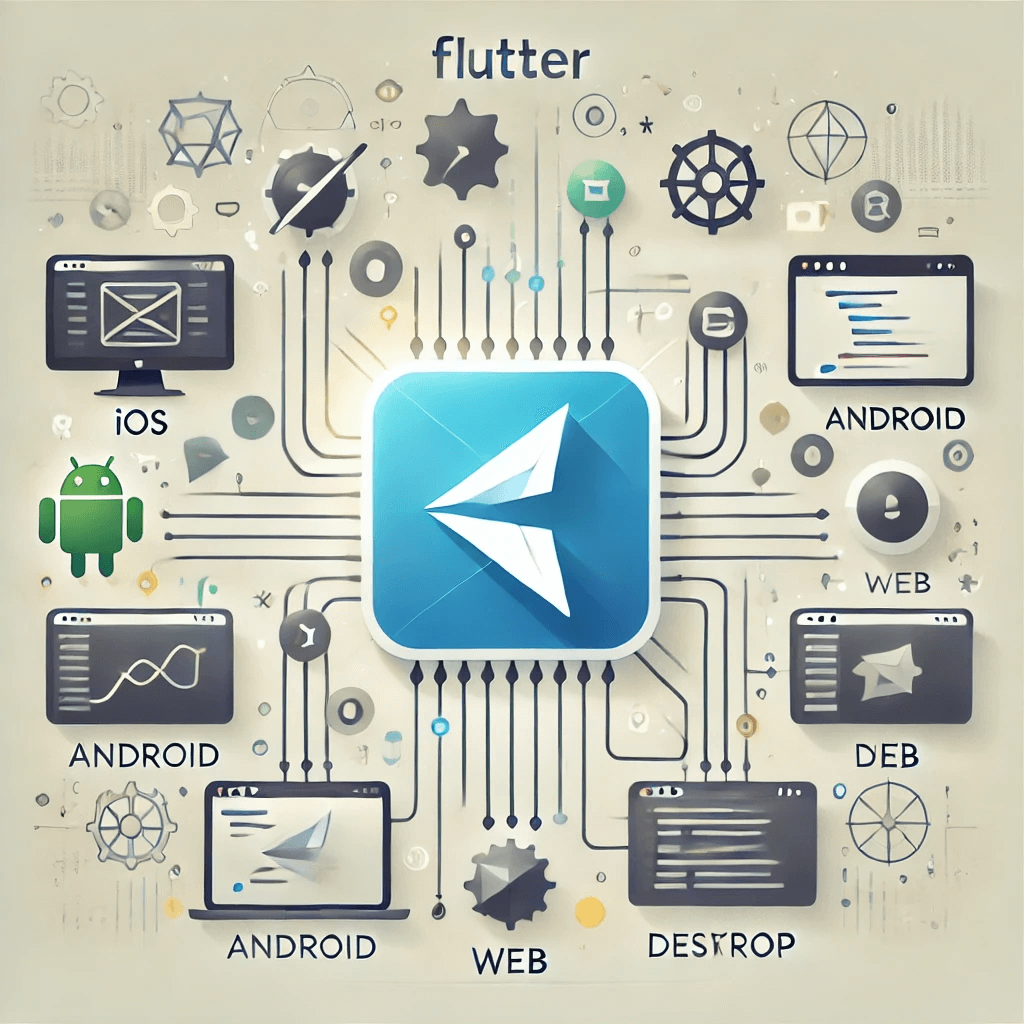In recent years, the landscape of mobile app development has evolved dramatically. Traditional methods of developing separate applications for iOS and Android have become less appealing due to the increased development time, higher costs, and the need for maintenance across multiple codebases. Enter Flutter, a game-changing framework by Google, which has revolutionized Flutter for Multiplatform Mobile Development.
What is Flutter?
Flutter is an open-source UI software development kit created by Google. It allows developers to build natively compiled applications for mobile, web, and desktop from a single codebase. Unlike other frameworks that rely on web technologies, Flutter uses Dart, a programming language also developed by Google. Dart is designed for both client and server-side development, which makes it highly versatile.
Advantages of Using Flutter
One of the primary benefits of Flutter is its ability to provide a consistent and seamless user experience across different platforms. By using a single codebase, developers can ensure that the app looks and feels the same on both iOS and Android devices. This consistency not only enhances the user experience but also significantly reduces development and maintenance costs.
Flutter also boasts a rich set of pre-designed widgets that make it easy to create a beautiful and intuitive UI. These widgets are customizable and can be tailored to meet the specific needs of an app. The hot reload feature in Flutter allows developers to see the effects of their changes almost instantly, speeding up the development process and making it easier to experiment with new features.
Performance and Efficiency
Performance is a critical factor in mobile app development, and Flutter does not disappoint. Because Flutter applications are compiled directly into native code, they offer performance levels comparable to those of native apps. This means that apps built with Flutter can take full advantage of the underlying hardware and provide a smooth, responsive user experience.
Moreover, Flutter’s architecture is designed to minimize the overhead typically associated with cross-platform frameworks. The framework uses a reactive programming model, which helps manage the state of the app efficiently. This ensures that apps remain responsive even as they grow in complexity.
Community and Ecosystem
The Flutter community has grown rapidly since its introduction, and there is a wealth of resources available for developers. From official documentation and tutorials to community-driven content and plugins, developers have access to a wide range of tools and support. The Flutter ecosystem is continually expanding, with new plugins and packages being developed to extend the framework’s capabilities.
Additionally, the Flutter team at Google is highly active in maintaining and improving the framework. Regular updates and enhancements ensure that Flutter remains a cutting-edge tool for multiplatform mobile development.
Real-World Applications
Several high-profile companies have adopted Flutter for their mobile applications. For example, Alibaba, one of the world’s largest e-commerce platforms, uses Flutter to power parts of its mobile app. The New York Times has also utilized Flutter to deliver a seamless reading experience across different devices. These real-world applications demonstrate the robustness and flexibility of Flutter.
Challenges and Considerations
While Flutter offers numerous advantages, it is not without its challenges. One of the primary concerns for developers is the size of the application. Because Flutter includes its rendering engine and framework components, the initial app size can be larger compared to other frameworks. However, the Flutter team is continually working on optimizations to reduce the app size.
Another consideration is the learning curve associated with Dart. For developers who are already familiar with JavaScript or other programming languages, there may be a period of adjustment when learning Dart. However, many developers find that Dart’s syntax and features are easy to pick up, especially with the abundance of learning resources available.
Conclusion
Flutter has emerged as a powerful and versatile framework for multiplatform mobile development. Its ability to deliver high-performance, visually appealing applications from a single codebase makes it an attractive choice for developers and businesses alike. While there are challenges to consider, the benefits of using Flutter far outweigh the drawbacks. As the Flutter ecosystem continues to grow and evolve, it is poised to play a significant role in the future of mobile app development.
This post was created with our nice and easy submission form. Create your post!







Comments
0 comments